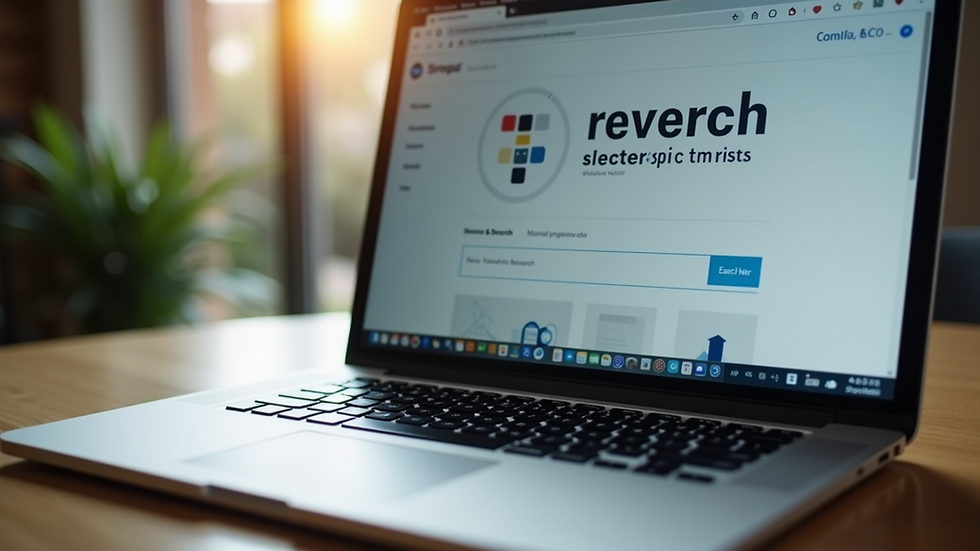What Makes a Strong Content Strategy in 2023?
- Diego Garzon
- Oct 20
- 4 min read
In 2023, the digital landscape continues to evolve rapidly, making a strong content strategy more crucial than ever. Businesses and creators must adapt to new trends, technologies, and audience behaviors to stay relevant and effective. A well-crafted content strategy not only drives traffic but also builds trust, engages audiences, and supports long-term growth. This article explores the key elements that define a strong content strategy in 2023 and offers practical advice to help you create one that works.
Understanding the Core of a Content Strategy in 2023
A content strategy is more than just publishing blog posts or social media updates. It is a comprehensive plan that aligns your content efforts with your business goals and audience needs. In 2023, a strong content strategy focuses on delivering value through relevant, timely, and personalized content.
Key components include:
Audience Research: Knowing who your audience is, what they want, and how they consume content.
Content Planning: Mapping out topics, formats, and channels that resonate with your audience.
SEO Integration: Optimizing content for search engines to increase visibility.
Performance Measurement: Using analytics to track success and refine your approach.
By prioritizing these elements, you ensure your content is purposeful and impactful.

Essential Elements of a Successful Content Strategy
To build a strong content strategy in 2023, focus on these essential elements:
1. Audience-Centric Content
Understanding your audience’s pain points, interests, and preferences is fundamental. Use surveys, social listening, and analytics to gather insights. Tailor your content to address specific needs and questions, making it more engaging and shareable.
2. Multi-Channel Distribution
Your audience is spread across various platforms - websites, social media, email, podcasts, and more. A strong content strategy ensures your message is consistent and optimized for each channel. Repurpose content to fit different formats and maximize reach.
3. Quality Over Quantity
With content saturation increasing, quality stands out. Focus on creating well-researched, original, and valuable content that builds authority and trust. Avoid churning out low-value posts just to meet a quota.
4. Visual and Interactive Content
Incorporate visuals like infographics, videos, and interactive elements to enhance engagement. Visual content is processed faster and tends to be more memorable.
5. Data-Driven Decisions
Leverage analytics tools to monitor content performance. Track metrics such as traffic, engagement, conversion rates, and bounce rates. Use this data to optimize your strategy continuously.

How do you write a content strategy?
Writing a content strategy involves a structured approach that ensures clarity and direction. Here’s a step-by-step guide:
Step 1: Define Your Goals
Start by identifying what you want to achieve. Common goals include increasing brand awareness, generating leads, boosting sales, or improving customer retention. Clear goals guide your content creation and measurement.
Step 2: Conduct Audience Research
Gather detailed information about your target audience. Create buyer personas that include demographics, interests, challenges, and preferred content types.
Step 3: Audit Existing Content
Review your current content to identify what works and what doesn’t. This helps avoid duplication and highlights gaps you can fill.
Step 4: Develop Content Themes and Topics
Based on your goals and audience insights, brainstorm themes and topics that align with your brand and audience interests. Prioritize topics that solve problems or answer common questions.
Step 5: Choose Content Formats and Channels
Decide on the types of content (blogs, videos, podcasts, etc.) and distribution channels (website, social media, email) that best reach your audience.
Step 6: Create a Content Calendar
Plan your content schedule to maintain consistency. Include deadlines, publishing dates, and responsible team members.
Step 7: Produce and Optimize Content
Create high-quality content optimized for SEO and user experience. Use keywords naturally and ensure readability.
Step 8: Measure and Refine
Regularly analyze content performance and adjust your strategy based on insights.
Following these steps helps you build a clear, actionable content strategy that drives results.
Leveraging Technology and Trends in Content Strategy
In 2023, technology plays a pivotal role in shaping content strategies. Here are some trends and tools to consider:
AI and Automation: Tools powered by AI can assist in content creation, personalization, and distribution. For example, AI can help generate topic ideas, optimize headlines, or automate social media posting.
Human-Centered Content: Despite AI’s rise, authentic and human-centered content remains vital. Content that connects emotionally and reflects genuine experiences resonates more deeply.
Voice Search Optimization: With the growing use of voice assistants, optimizing content for voice search queries is increasingly important.
Video and Live Streaming: Video content continues to dominate. Live streaming offers real-time engagement opportunities.
Sustainability and Ethics: Audiences are more conscious of ethical practices. Transparent and responsible content builds trust.
Incorporating these trends can enhance your content strategy’s effectiveness and relevance.

Real-World Content Strategy Examples to Inspire You
To understand what a strong content strategy looks like in practice, explore content strategy examples that demonstrate human-centered approaches and innovative techniques. These examples showcase how brands successfully connect with their audiences by focusing on authenticity, value, and strategic distribution.
By studying these cases, you can gain insights into:
How to align content with audience needs
Effective use of multimedia and storytelling
Integration of SEO and user experience
Measuring impact and iterating for improvement
Applying lessons from proven strategies can help you craft your own winning content plan.
Building a Sustainable Content Strategy for the Future
A strong content strategy is not a one-time effort but an ongoing process. To ensure sustainability:
Stay Updated: Keep abreast of industry changes, algorithm updates, and audience behavior shifts.
Be Flexible: Adapt your strategy based on performance data and emerging trends.
Invest in Skills: Train your team in content creation, SEO, analytics, and new technologies.
Foster Collaboration: Encourage cross-functional teamwork between marketing, sales, and product teams.
Prioritize User Experience: Always focus on delivering value and a seamless experience to your audience.
By committing to continuous improvement and innovation, your content strategy will remain strong and effective in 2023 and beyond.




Comments